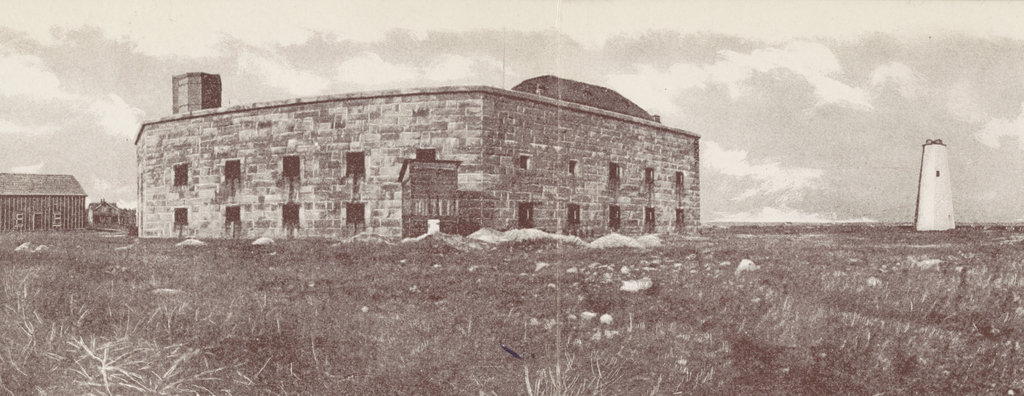Fort Rodman on Clark’s Point in New Bedford, around 1906. Photographed by Blanchard, Young & Co., courtesy of the Library of Congress.
The scene in 2022:
These two photos show the old stone fort at Ford Rodman, located on Clark’s Point at the entrance to New Bedford Harbor. Construction of the fort began in 1857, using granite from nearby Fall River and also from Sullivan, Maine, but it was still incomplete in 1861, at the outbreak of the Civil War. Concerned about the threat of marauding Confederate ships attacking the city’s whaling fleet, local officials took it upon themselves to build a small earthwork fort, which they named Fort Taber in honor of the current mayor. It was located directly to the west of the stone fort, in the distance on the left side of this scene. Fort Taber remained in use for about two years, until the stone fort was was completed enough to be usable.
As it turned out, the fort was never needed to fend off Confederate raiders, and the construction work was not completely finished before the end of the war. The work was halted, but then in the late 1800s the Army began to expand the facility by adding newer artillery batteries on the grounds near the stone fort, along with additional buildings. Although the stone fort did not officially have a name, it was often referred to as Fort Taber, since that name had been assigned to the earlier earthwork fort. However, in 1899 the entire facility was named Fort Rodman in honor of Lieutenant Colonel William Logan Rodman, the highest-ranking New Bedford native who was killed in the Civil War.
The first photo was taken soon after this, around 1906, and it shows the view of the fort from the south, facing toward the entrance to New Bedford Harbor. On the right side of the first photo is the old Clarks Point Light, a stone lighthouse tower that had been built more than a century later in 1804. It had been use until 1869, when a new lighthouse was constructed directly atop the walls of the fort. By the time the first photo was taken the lantern at the top of the tower had been removed, but the tower itself stood here until it was demolished in 1906, probably soon after the photo was taken.
Fort Rodman never saw any combat, but it remained in use as a coastal defense facility throughout World War I and World War II. It was later used as an Army Reserve site, before eventually being sold to the city of New Bedford in the 1970s. Many of the old fort buildings are gone now, and a wastewater treatment plant now occupies a portion of the grounds, but the original stone fort is still standing here. The area around it is now a public park, known as Fort Taber Park.


